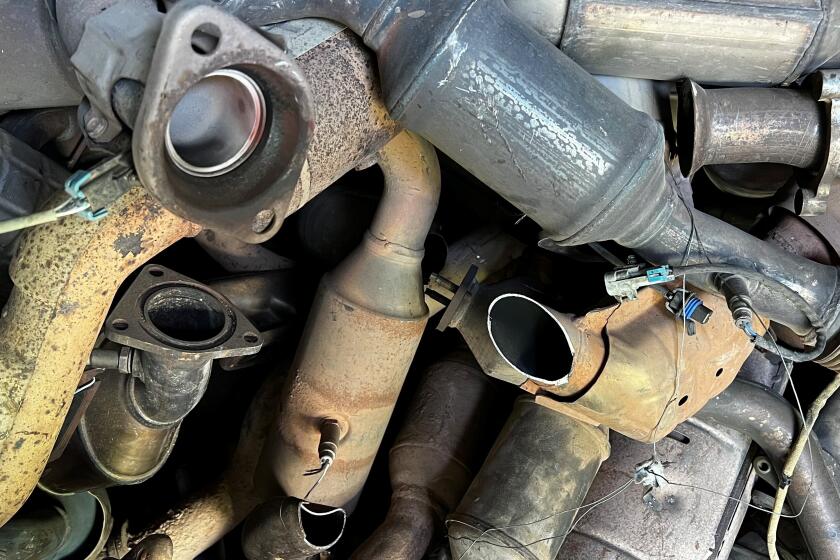Study challenges drug’s role in autism
- Share via
The prevalence of autism in California children continued to rise after many vaccine manufacturers started to remove the mercury-based preservative thimerosal in 1999, suggesting that the chemical was not a primary cause of the disorder, according to a study released Monday.
The analysis found that from 2004 to 2007, when exposure to thimerosal dropped significantly for 3- to 5-year-olds, the rate continued to increase in that group from 3.0 to 4.1 per 1,000 children.
“If mercury exposure in vaccines was a major cause of autism, then the number of ... affected kids should have diminished once they were no longer exposed to thimerosal,” said Dr. Robert Schechter, lead author of the study and a medical officer at the state Department of Public Health. “That is not what we found.”
The study, published in the Archives of General Psychiatry, is the latest in a series that has investigated the connection between thimerosal and autism. The majority have found no association.
But the latest findings failed to convince some parents and advocacy groups that have long blamed mercury, a neurotoxin, for the disorder.
“This study presents a greatly over-simplified explanation of a very complex problem,” said Claire Bothwell, chairwoman of the board at the National Autism Association, which works on behalf of families with autism. “Rising numbers do not confirm that thimerosal never had a role.”
Autism is a severe developmental disorder in which children seem isolated from the world around them. There is a broad spectrum of symptoms, marked by poor language skills and an inability to handle social relations.
Over the past two decades, the number of cases has boomed for still-unexplained reasons. Psychiatrists estimated that 20 years ago there were 0.2 to 0.5 cases for every 1,000 children. In 2007, the national Centers for Disease Control and Prevention estimated that there were 6.6 cases per 1,000 schoolchildren, based on a study of 8-year-olds.
The latest study was based on data from the California Department of Developmental Services, which provides services to about 36,000 people with autism and has one of the country’s best reporting systems.
The researchers looked at all reported cases in the state starting with children born in 1989. They found the number of cases per 1,000 children has been steadily increasing from that point to March 2007, the end point of the study.
In a commentary accompanying the study in the journal Archives of General Psychiatry, Dr. Eric Fombonne called the data “a clear and unambiguous test.”
“Parents of autistic children should be reassured that autism in their child did not occur through immunizations,” wrote Fombonne, a psychiatrist at Montreal Children’s Hospital who was not involved in this study.
Fombonne has provided advice to vaccine manufacturers in the past but has received no research funding from them, he said.
Steve M. Edelson, an experimental psychologist who is director of the Autism Research Institute, a nonprofit organization in San Diego, said the study, along with evidence from previous research, argued against thimerosal as the major culprit in autism.
But, he added, it still does not rule out all blame. Edelson said such large-scale analysis could overlook smaller groups of children, who for whatever reasons have a particular vulnerability to mercury. He said more solid evidence can only come from laboratory studies, such as postmortem analyses of the brains of autistic children.
The National Autism Association criticized the study, saying that some children still might be exposed to mercury through either flu shots or trace amounts in other vaccines. The group also said that some vaccines containing thimerosal had expiration dates as late as 2005 and might have been used up to that point.
More to Read
Sign up for Essential California
The most important California stories and recommendations in your inbox every morning.
You may occasionally receive promotional content from the Los Angeles Times.










